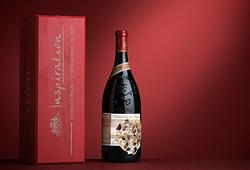A famille verte stem cup, Qing dynasty, Kangxi (1662-1722).
The decoration on the bowl is of a scholar – painted in hues of green, aubergine and yellow – surrounded by scrolls and within a rocky fenced landscape. The scholar is thought to be the Chinese calligrapher Wang Xizhi (303-361). An approaching attendant carries food and close to the scholar is a goose. The bevelled and partially hollow stem is decorated with two of the “Eight Precious Objects” - embellished with ribbons indicative of magic powers. Height 11,6 cm.
Crack.
Provenance
By repute purchased from John Sparks Limited in the 1960’s.
The Avalon Collection Part II.
This collection, which in the main focuses on the Interregnum and Kangxi periods has been both carefully and sensitively formed over the last twenty-five years. The collector, a member of the English Oriental Ceramic Society, has assembled the collection with an eye for provenance whilst purchasing from old European collections, well-established antique dealers and at auction.
Academically, the pieces have been well researched both in terms of their symbolism and narrative themes. In many instances the imagery on the pieces has been referenced to episodes in the romantic and historic novels of Chinese mythology, which were used extensively in the decoration of seventeenth century Chinese porcelain.
Exhibitions
There is a small porcelain cup depicting Wang Xizhi “walking geese” in the China Gallery of the Asian Civilisation Museum in Singapore.
Literature
The scholar is thought to be the Chinese calligrapher Wang Xizhi (303-361) who is referred to as the “Sage of Calligraphy”. He is considered by many to be one of the most esteemed calligraphers of all time and a master of the running script. He is particularly remembered for his pastime of rearing geese. Legend has it that by observing how geese moved their necks, he developed the ability of turning his wrist whilst writing.
The scene on the cup is thought to describe the story of Wang Xizhi’s visit to Shaoxing where there was a Daoist monk who had a flock of fine geese. Wang Xizhi was delighted by the geese and as a result wished to buy them – although the monk was reluctant to sell. However after much persuasion the monk relented, agreeing to give Wang Xizhi the flock in exchange for a transcript by him of Laozi’s Daodejing, with its commentary by Heshanggong. The monk had already prepared the scrolls in advance but could not find anyone with experience enough to write them. Wang remained for half a day to write out two chapters – both the Dao and the De. Later he returned home - after having caged the geese as his reward.













































